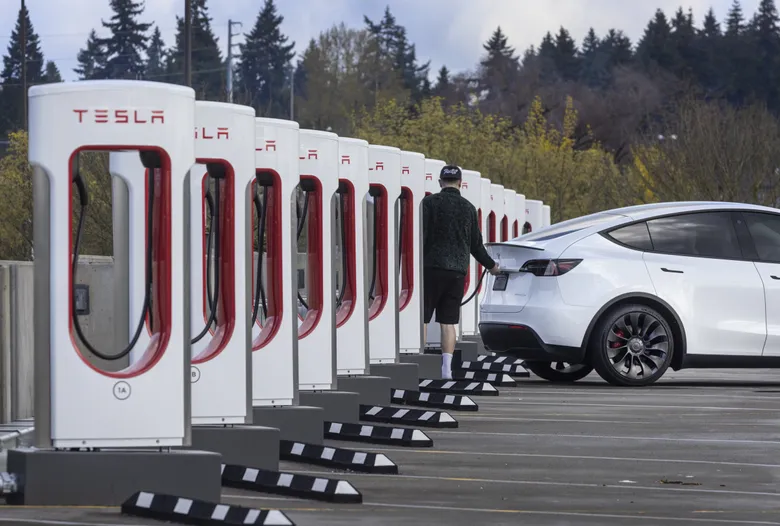Tesla initiates a recall affecting over 2 million vehicles in the United States, addressing concerns with the Autopilot, the brand’s driving-assistance feature, aiming to enhance driver attention verification. Documents disclosed by U.S. safety regulators on Wednesday outline the corrective measures, which
involve heightened warnings to drivers, accompanied by limitations on basic Autopilot functionality areas. Tesla anticipates releasing a software solution enabling users to address these issues remotely, avoiding the need for a dealership visit.
This recall follows an extensive two-year inquiry by the National Highway Traffic Safety Administration (NHTSA) into a series of accidents involving the use of Autopilot, some of which resulted in fatalities. The investigation’s findings prompted Tesla to take corrective action.
Here’s a breakdown of the crucial aspects:
Impact on Washington Drivers
With approximately 150,000 electric vehicles registered in Washington, a segment that has expanded sixfold in the last five years, the recall’s implications are significant.
Electric vehicle ownership, mainly concentrated west of the Cascades, indicates that around half of the state’s EVs are registered in King County, with Snohomish and Pierce counties following suit. Tesla remains the predominant electric vehicle brand in the state.
Autopilot Safety Overview
The Autopilot system, a standard feature in all new Teslas, encompasses automatic steering assistance and cruise control. The NHTSA’s recall emphasizes an augmented risk of accidents when the Autosteer system is engaged and the driver is unprepared to intervene or fails to recognize system disengagement.
The recall notes concerns about potential misuse, emphasizing that the controls’ visibility and comprehensiveness may not be sufficient to prevent such misuse.
While Tesla maintains on its website that the vehicles are safe to drive, it acknowledges an elevated collision risk if drivers misuse the Autopilot system.
Recall Details
The recall involves an over-the-air software update to the Autopilot system for Tesla models Y, S, 3, and X manufactured between Oct. 5, 2012, and Dec. 7, 2023.
The update aims to commence on or shortly after Tuesday, with some affected vehicles receiving it at a later date. Importantly, Tesla assures that customers can install the software fix at their convenience without requiring a scheduled service appointment.
The software update introduces additional controls and alerts to encourage drivers to uphold their continuous driving responsibility when Autosteer is engaged.
These enhancements include reinforcing the need to keep hands on the steering wheel, pay attention to the road, and conduct additional checks when using the system outside highways and approaching traffic controls.
Understanding Autosteer
Autosteer is a component of Tesla’s Autopilot system, providing steering, braking, and acceleration support to the driver. It is expressly designed for use with a fully attentive driver on controlled-access highways and not in conjunction with the Autosteer on City Streets feature.
Importantly, Autosteer does not render the vehicle autonomous; the driver remains the operator, responsible for the vehicle’s movement and maintaining attentiveness to road conditions.
The Essence of a Recall
The term “recall” implies a manufacturer or NHTSA determination that a vehicle, equipment, car seat, or tire poses an unreasonable safety risk or fails to meet federal safety standards.
In Tesla’s case, the recall is addressed through an automatic software update, aligning with NHTSA guidelines that mandate corrective actions to remedy defects.
Recall Triggers and Investigations
The recall emerges from a comprehensive two-year investigation by the NHTSA into the safety of Tesla’s driver assistance systems. A scrutiny of 956 crashes initially believed to involve Autopilot usage narrowed down to 322 Autopilot-involved crashes, highlighting safety concerns.
These crashes resulted in at least 17 fatalities, according to information from The Associated Press.
In essence, Tesla’s proactive recall seeks to address these safety concerns, with an automatic software update serving as the remedy for affected vehicles.
